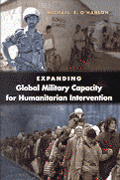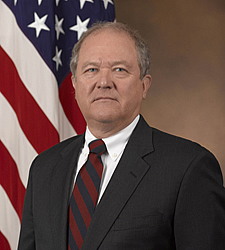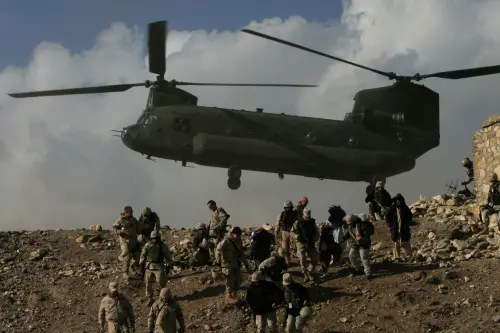The following is adapted from prepared remarks that John F. Sopko, Special Inspector General for Afghanistan Reconstruction, delivered at Brookings on May 24, 2018. You can find the full event video here.
The fourth lessons-learned report from the Special Inspector General for Afghanistan Reconstruction (or SIGAR), entitled “Stabilization: Lessons from the U.S. Experience in Afghanistan,” is the culmination of two years of work and examines the U.S. stabilization effort in Afghanistan. It details how USAID, the State Department, and the Defense Department tried to support and legitimize the Afghan government in contested districts in Afghanistan from 2002 through 2017.
The SIGAR office is statutorily unique since we are the only federal oversight agency that can look holistically at the whole-of-government effort in Afghanistan, which means we are not constrained by agency stove-pipes. The report we have produced contains findings, identifies lessons, makes recommendations to the executive branch, and includes matters for congressional consideration. Here, I’ll outline our overall assessment of the stabilization effort and then highlight some areas of particular concern.
Overall assessment
Unfortunately, SIGAR’s overall assessment is that despite some heroic efforts to stabilize insecure and contested areas in Afghanistan between 2002 and 2017, the program mostly failed. This happened for a number of reasons, including the establishment of a set of unrealistic expectations about what could be achieved in just a few years’ time. The lack of capacity of U.S. government agencies to fully support those accelerated efforts, and institutional rivalries and bureaucratic hurdles compounded an already difficult task.
Every organization and agency that worked on stabilization in Afghanistan—from Department of Defense (DOD) civil affairs and special operations forces to State and USAID—suffered from personnel and programming deficits borne from rapid scaling, short tours, and the pressure to make quick progress. No organization was prepared for these challenges—and it showed.
Stabilization is inherently a joint civilian and military undertaking, yet given the size and resources of DOD, the military consistently determined priorities on the ground and chose to focus on the most insecure districts first—a decision our report questions. These areas often remained perpetually insecure and had to be cleared of insurgents again and again. Civilian agencies, particularly USAID, were compelled to conduct programs in these fiercely contested areas that were not ready for stabilization programs.
Because the coalition focused on the most insecure areas and rarely provided enduring security after clearing them, Afghans were often too afraid to serve in local government. Afghan civilians had little faith their districts would remain in government hands when the coalition withdrew. Implementing partners struggled to execute programs amid the violence. And U.S. government agencies were unable to adequately monitor and evaluate projects.
Civilian-Military Tensions
One of the challenges facing stabilization efforts in Afghanistan came from institutional differences and rivalries that start in Washington. While the military was focused on the “clear, hold, build” tenets of counter-insurgency (or COIN) doctrine, State and USAID faced challenges given the pressure from DOD to quickly show gains on the ground.
This led to significant tensions between USAID and the military over USAID’s reluctance or inability to work in the most contested and insecure districts—the same areas the military believed to be the most important to reverse Taliban momentum. Often, the military would claim a district was cleared and thus ready for USAID to start stabilization programming. Yet “clear” meant something very different to the military than it did to the USAID and Afghan contractors tasked with, for example, paving a road in an insecure area. The military may have deemed the area “safe enough,” but it made little difference if the contractors charged with executing the “hold” or “build” phase of the stabilization effort were in danger, or felt they were so.
Some senior USAID officials told us that coalition military forces pushed the agency into going along with clear-hold-build and demanded that it implement programs, such as cash-for-work, on a large scale over USAID’s protests. Senior military officials likewise told us that they had little choice but to do things quickly and focus on the most dangerous areas.
USAID officials also had a difficult time arguing against the military’s belief that stabilization projects would buy the support of the population, convince them to share information about improvised explosive devices (IEDs), and thus save coalition lives. As one USAID official stated, “The military expected us to be bags of cash.”
Prior to the surge, USAID advisors were often able to exercise veto power about where and how military commanders used funds from the Commander’s Emergency Response Program, otherwise known as CERP. Later, USAID’s influence over CERP expenditures was significantly diminished. As one official noted, when USAID tried to stop implementing projects in areas where they could not be monitored or evaluated, the military sometimes set aside the civilian-military partnership model and used CERP unilaterally.
As of a result, all types of stabilization programming were implemented during all stages of clear-hold-build, even when USAID knew the sequencing was inappropriate and programs would be ineffective. Under pressure from the military, USAID built schools in places where they could not be monitored, the government could not maintain and staff them, and students attended only sporadically, if at all, due to insecurity. Military commanders likewise concentrated large CERP projects in less secure areas, where they were less likely to succeed.
Civilian Personnel Issues
In contrast to DOD, State and USAID—the two agencies that provided the most personnel for the civilian surge—did not have sufficient staffing, especially built-in staff redundancy, to enable rapid mobilization to the field.
Without that capacity in Afghanistan, State and USAID struggled. To meet the demands of the civilian surge, State and USAID pulled staff from other assignments and hired temporary staff. The number of civilian personnel under Embassy Kabul’s control more than tripled from 320 to 1,142 between January 2009 and December 2011. Astoundingly, by 2011, more than 20 percent of all USAID’s worldwide staff were in Afghanistan.
As one USAID official told SIGAR: “At the height of the civilian surge, our existing numbers were so limited we were forced to bring on roughly 250 to 350 people per year to do the work of USAID across Afghanistan, many with little to no practical USAID experience.” One of the hires noted that they got the job because “I had a pulse and a master’s degree.” By 2011, the demand for personnel had so exceeded the supply that State and USAID were unable to hire enough people to fill all of the civilian slots that coalition military forces requested.
The use of temporary hires had positive and negative trade-offs.
Unlike permanent USAID personnel, temporary hires could stay in Afghanistan more than one year, avoiding the loss of institutional memory, or what I call the “annual lobotomy” that occurs when personnel rotate out of country after one year or less.
Unfortunately, these temporary hires had little, if any, experience or training in monitoring and project oversight. As a result, few of those civilians working at the local level had agency authority to oversee programming. At one point, USAID’s Regional Representatives—the most senior USAID officials at each regional command in Afghanistan—had no oversight authority over programs in their area of operations. Decisions defaulted to far-off Embassy Kabul, with which field personnel routinely had problems communicating effectively.
Contracting also surged. At one point, a high-ranking USAID official determined that in order to meet the U.S. government’s average ratio of dollars to the number of contracting officers, USAID would have to send nearly its entire overseas workforce to Afghanistan. The number of contractor personnel overseen by direct-hire State and USAID personnel was unfathomably large. In 2011, there were approximately 18 contractors to one direct hire at State and the ratio was 100 to 1 at USAID.
Even with a sufficient number of highly trained personnel, stabilization operations in Afghanistan would have been challenging. Unfortunately, State and USAID did not have the right personnel to effectively execute the mission, in spite of efforts made years earlier to provide them with exactly that capability.
Did Stabilization Work?
But despite these and other challenges, was stabilization programming in Afghanistan effective? External research reviewed by SIGAR found that the evidence is inconclusive and contradictory. Some research found that USAID’s programming was stabilizing, some found no impact, and other research found that the programming was, in fact, destabilizing.
There are some factors that seem to be common among the more successful stabilization interventions in Afghanistan. Stabilization was more effective in areas where the government had a degree of physical control. It was also more successful when implementers undertook fewer activities with a higher degree of oversight, flexibility, and staffing. Stabilization could not be done well on the cheap—successful projects were labor intensive for donors and implementing partners alike.
We found that progress toward stabilization is slow and messy. At best, it results in small gains that require constant reinforcement to avoid reversals. The timeline U.S. agencies were operating under assumed that quick security gains would be matched by equally quick stabilization and governance gains. The latter failed to materialize before security forces withdrew and instability returned to many of the areas where stabilization programs were working.
Our research also found that implementing smaller projects helped programs avoid some of the common pitfalls of working in the midst of a counterinsurgency. Avoiding these pitfalls of stabilization, such as predatory officials, corruption, and insurgent sabotage, while still providing tangible benefits to communities was easier for smaller scale projects. According to a 2010 U.S. Embassy assessment, it was also easier to ensure community buy-in and ownership of small-scale infrastructure projects than it was for large ones. As SIGAR has identified previously, research demonstrated that superficial measures of aid, such as the sheer amount of money spent or outputs produced, had no correlation on impact.
As one senior USAID official told us, “If you go fast, you actually go slow. But if you go slow on purpose, you actually go faster.” One area where the U.S. effort seemed to get it right was in Marawara District in Kunar province. The panel discussion will go into that example in greater detail, but a combination of capable individuals in key roles, a willingness by those individuals to collaborate, and a heavy presence of U.S. military forces in the area helped that initiative succeed more than others.
Conclusion
I have identified only a few of the major challenges the effort to stabilize Afghanistan faced. The poor results of this particular mission may make it tempting to conclude that stabilization should never be undertaken again. However, given the security challenges we face in today’s world, that simply may not be a realistic choice.
Rather, the U.S. government must address the challenges and capacity constraints identified in our report. Given the lack of alternatives to stabilization in a ungoverned space that has been cleared of insurgents or terrorists, the best course of action may be for the U.S. government to balance the importance of any stabilization mission with a realistic understanding of the level of effort required and what is achievable. Additionally, our government must improve its ability to prepare for, design, execute, monitor, and evaluate stabilization missions. The need for such expertise will not diminish any time soon.
We cannot afford to fail to absorb the lessons we’ve learned in Afghanistan as we continue to contemplate such programs both there and in other countries in the future.
The Brookings Institution is committed to quality, independence, and impact.
We are supported by a diverse array of funders. In line with our values and policies, each Brookings publication represents the sole views of its author(s).







Commentary
Lessons learned from the U.S. experience in Afghanistan
May 30, 2018